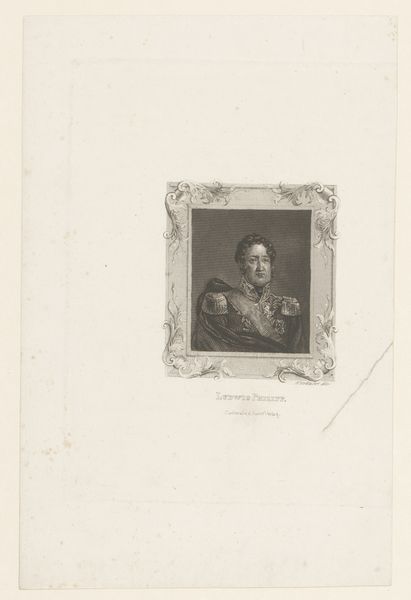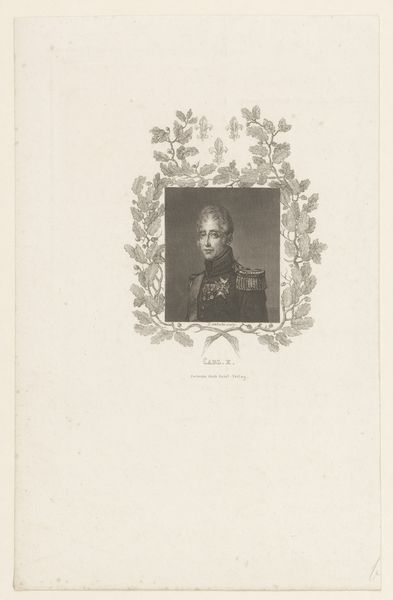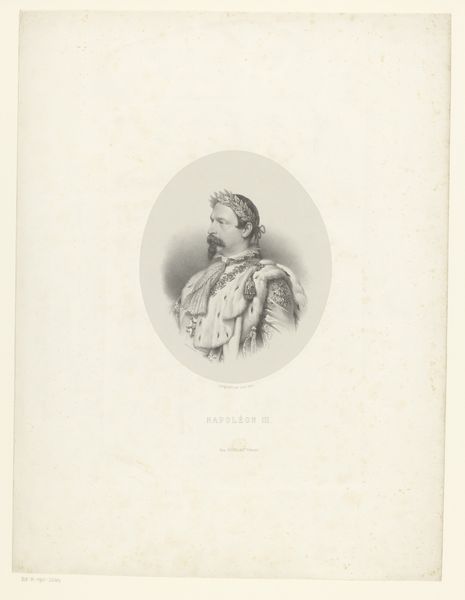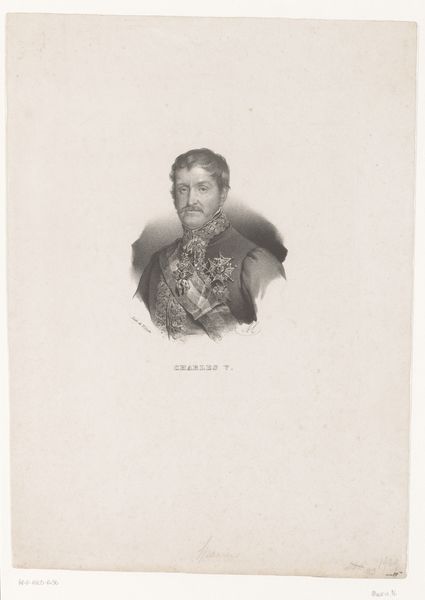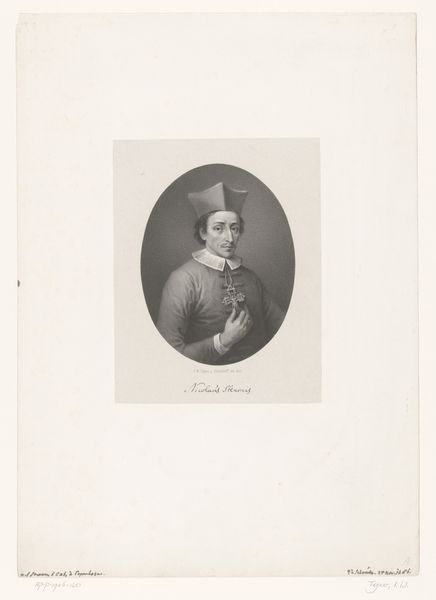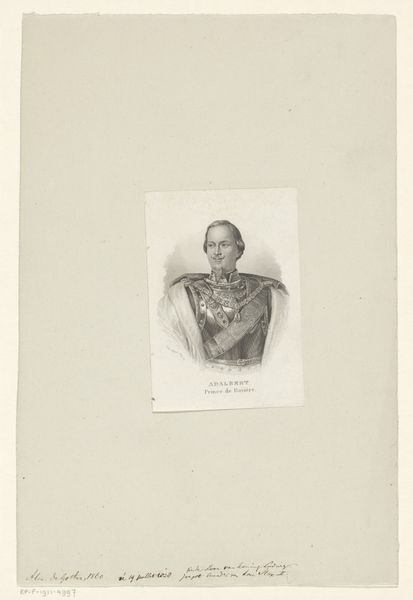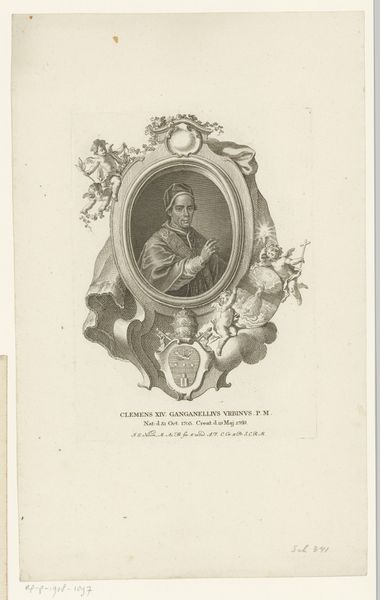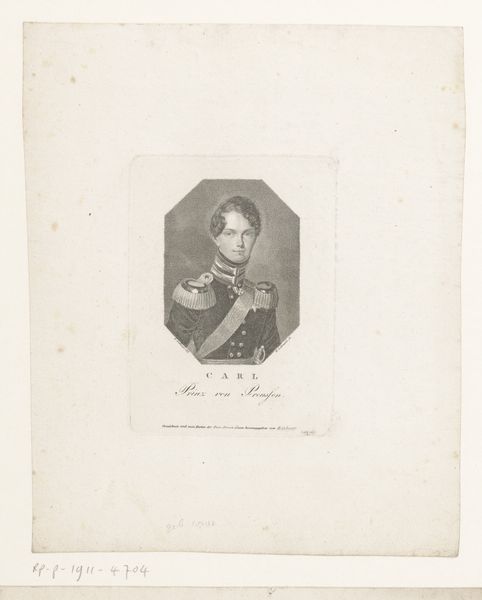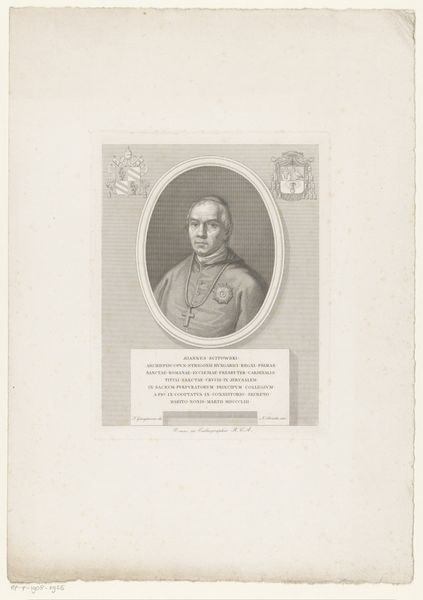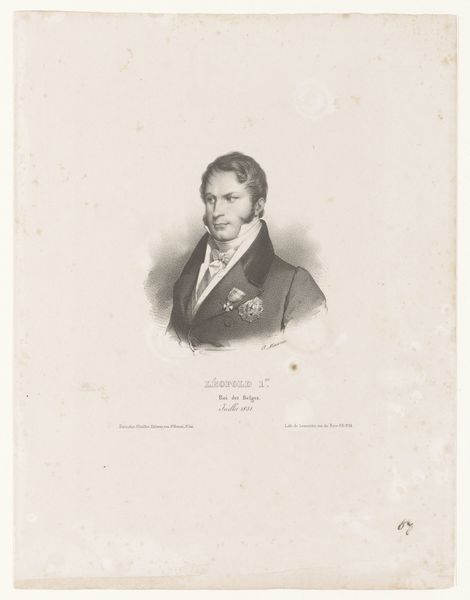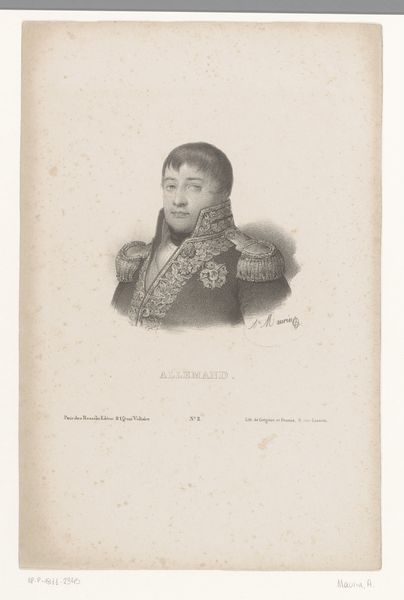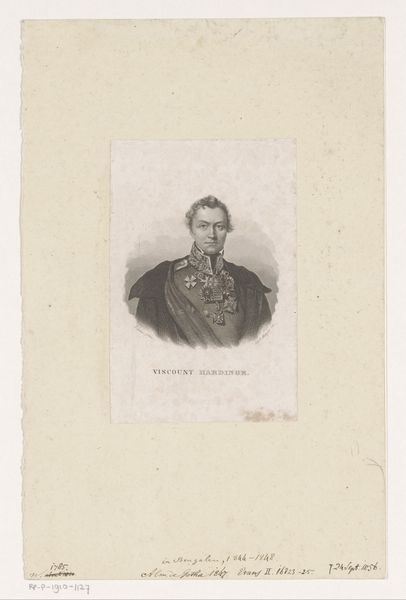
print, engraving
#
portrait
#
neoclacissism
# print
#
history-painting
#
engraving
Dimensions: height 165 mm, width 118 mm
Copyright: Rijks Museum: Open Domain
Curator: This is an engraving from between 1816 and 1882. It's a portrait of Friedrich Wilhelm III of Prussia by Edouard Schuler. Editor: It has such a solemn air, doesn't it? A rigid pose, those stern eyes… Very buttoned-up. Curator: It certainly conveys a sense of authority. We're looking at an example of Neoclassicism, which often emphasized order, reason, and, especially in portraiture like this, a glorification of historical figures or leaders. Editor: All those ornate details, like the meticulously rendered leaves and that crown…one can only imagine the labor that went into creating the copper plate. What kind of statement does such extravagant production make? Curator: In the context of post-Napoleonic Europe, these visual cues acted to reaffirm power structures and hierarchies. Schuler aimed to enshrine Friedrich Wilhelm III within a narrative of unwavering leadership and Prussian identity. Editor: Absolutely, the materials and craftsmanship perform power here as much as the image itself does. Look how every part, every piece is a process towards declaring control. Curator: This print was undoubtedly disseminated widely, contributing to a collective understanding and perhaps acceptance of the monarch’s position in society. Editor: And the framing with oak leaves? Symbols of strength, of durability… such calculated choices! Do you think the print medium affected access or understanding of this work, reaching wider audiences due to print availability? Curator: Without question. Printed images offered wider accessibility, contributing to image propagation and standardizing particular perceptions around rulership and historical events. Editor: It's easy to dismiss prints because they feel commonplace to modern sensibilities, but really, if we explore the means of production, the skill behind these reproductions—I find that’s where a work like this yields insights. Curator: For me, analyzing representations like these lets us consider how social identity and authority were shaped and perpetuated visually within a historical and political framework. Editor: Indeed, an object with significant implications revealed by its very construction.
Comments
No comments
Be the first to comment and join the conversation on the ultimate creative platform.
